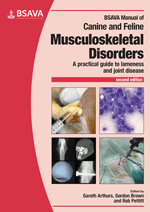
Full text loading...

It is essential that the clinician recognizes and understands normal gait patterns so that the presence, extent and potential significance of abnormality can be appreciated. This chapter describes and compares subjective and objective methods of gait analyisis.
Normal locomotion, Page 1 of 1
< Previous page | Next page > /docserver/preview/fulltext/10.22233/9781910443286/9781910443286.1-1.gif

Full text loading...











